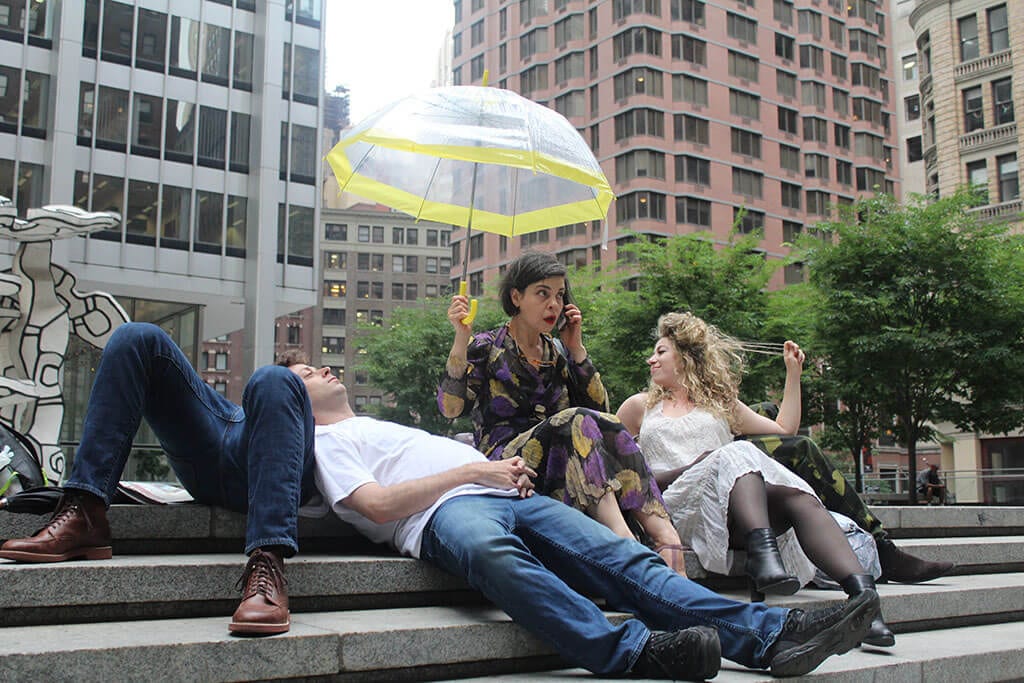Clearly, the playwright and directors want to change the way the audience (an audience of one. You.) experiences theater. This piece actually comprises three different storylines played out on the streets of New York, “Past”, “Future”, and “Present”. You can experience one, two or three of them. I followed “Present”.
We begin in front of a patisserie at 28 Liberty Street. You are seated at an outside table next to a young woman, who soon begins to speak in a vaguely poetic manner about the nature of memory and the virtues of not having any, of experiencing everything in a completely visceral and fresh way. There is a sort of flash mob modern dance and you are introduced to Paulina, well, experiencing that.
Paolina is a woman who for the most part is only able to experience her life in the moment. She has virtually no memory of her past and no sense of the future. What she experienced five minutes ago simply evaporates from her consciousness.
The first narrator, of whom there are four, invites you to follow Paolina on her daily walk, which she accomplishes by what feels “right”. Did I mention that you should be prepared to go on a bit of a walking tour of the Wall Street area? Now this is where the whole memory thing gets a little tricky. There are a couple of vignettes with a young women who you begin to think may be Paolina’s child and who is sometimes almost manic in her enthusiasm and sometimes very clearly troubled. These scenes seem to be a fine, fleeting filament of memory. At a certain point early on while you are following Paulina, you realize the narrator has disappeared. This is initially unsettling if you are directionally challenged! It is therefore quite comforting when the next narrator appears to take your arm and continue the journey.
You find yourself at the entrance of a handsome subway station where you find the aforementioned young woman talking on her cell phone to her mother and clearly in great distress – another filament of memory for Paolina. You wander into a lovely church courtyard to find a saxophone player who turns up here and there throughout the piece and who you begin to think may be–or may have been–Paolina’s husband. You find yourself wandering through a pretty little grocery store where Paolina experiences the smell of cheeses and the colors and textures of vegetables. Be prepared for some curious looks from perplexed pedestrians! All the while the various narrators will periodically drop vague hints as to her presumably tragic past. You find out that she was a dancer with Pina Bausch and that she may have been married to…a saxophone player.
It is not until the final scene with a young woman who it turns out is (one of) Paolina’s daughters that her story is revealed. For the brief length of that dialogue she appears to know who she’s talking to but not when.
Paolina is played with an ethereal childlike wonder by Orietta Crispino. Given that she has very few lines her performance is a marvel of physicality. Credit needs to go to all of the actors. The script is sometimes stilted, but all of the performers do a good job of giving the words life. The ending is a bit precious and I think is really just a device to get you back where you started. Overall I enjoyed the experience, but if you want to participate, you will need to leave your pragmatic self at the door.

